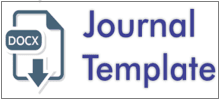Analysis of Deixis in Buginese Language of Segeri Dialect: Story of La Pesok Sibawa La Buta
DOI:
https://doi.org/10.56630/jti.v1i2.21Abstrak
This paper aims to describe (1) the type and form of deiksis in the story of la Pesok sibawa la Buta and (2) the deixis reference in the story of la Pesok sibawa la Buta in Buginese Language Segeri dialect. The type of this research is descriptive qualitative research. The data used in this paper are taken from the story of la Pesok sibawa la Buta. Furthermore, the object of this research is a grammatical unit of words, phrases, clauses and a sentence containing dexterity, form, and reference in the story of la Pesok sibawa la Buta. The data in this research were analyzed by using a pragmatics theory. In additional, in understanding the story, this paper also used intuitive data from the researcher, who is also a buginese native speaker of Segeri dialect. Method applied to find out the deixis in Buginese language Segeri dialect is descriptive qualitative method. The result of the analysis shows that there are five types of deixis with various forms of deixis based on the story of la Pesok sibawa la Buta; those are person deixis, spatial deixis, temporal deixis, social deixis, and discourse deixis.Keywords: deixis, buginese language, segeri dialect
Referensi
Cahyani, A. (2014). Analisis Deiksis dalam Komik Angkara Tan Nendra Karya Resi Wiji S. dalam Majalah Panjebar Semangat (Doctoral dissertation, Pend. Bhs Jawa).
Cook, H. M. (1998). Situational meanings of Japanese social deixis: The mixed use of the masu and plain forms. Journal of Linguistic Anthropology, 8(1), 87-110.
Dylgjeri, A., & Kazazi, L. (2013). Deixis in modern linguistics and outside. Academic Journal of Interdisciplinary Studies, 2(4), 87.
Levinson, S. C. (1995). Cognitive Anthropology. Cambridge University Press: Cambridge



















